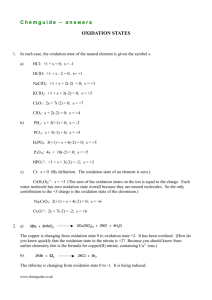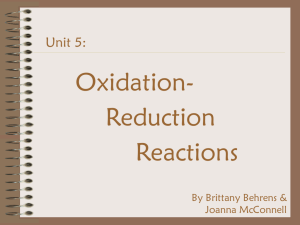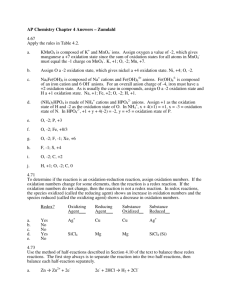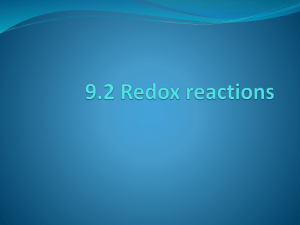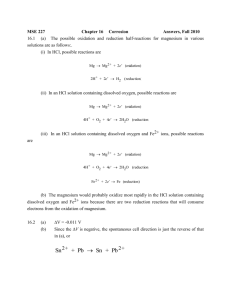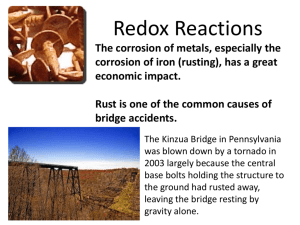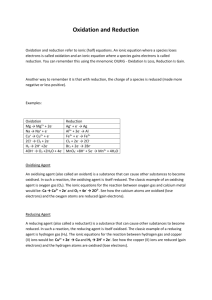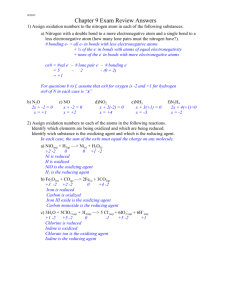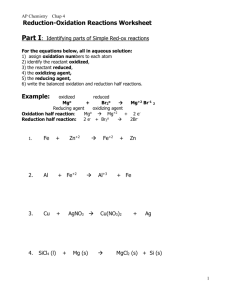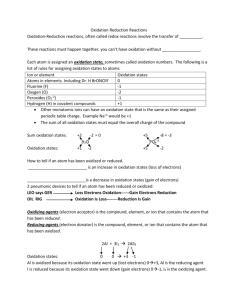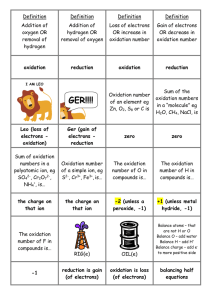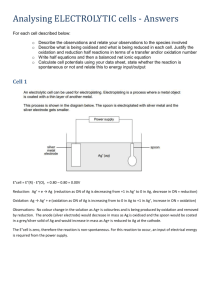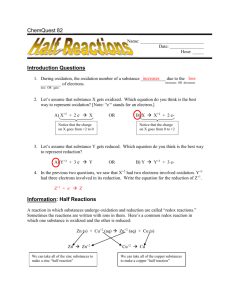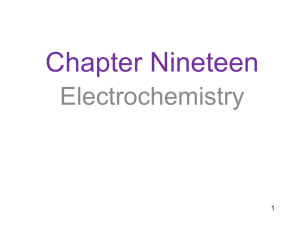REDOX 91167 revision
advertisement
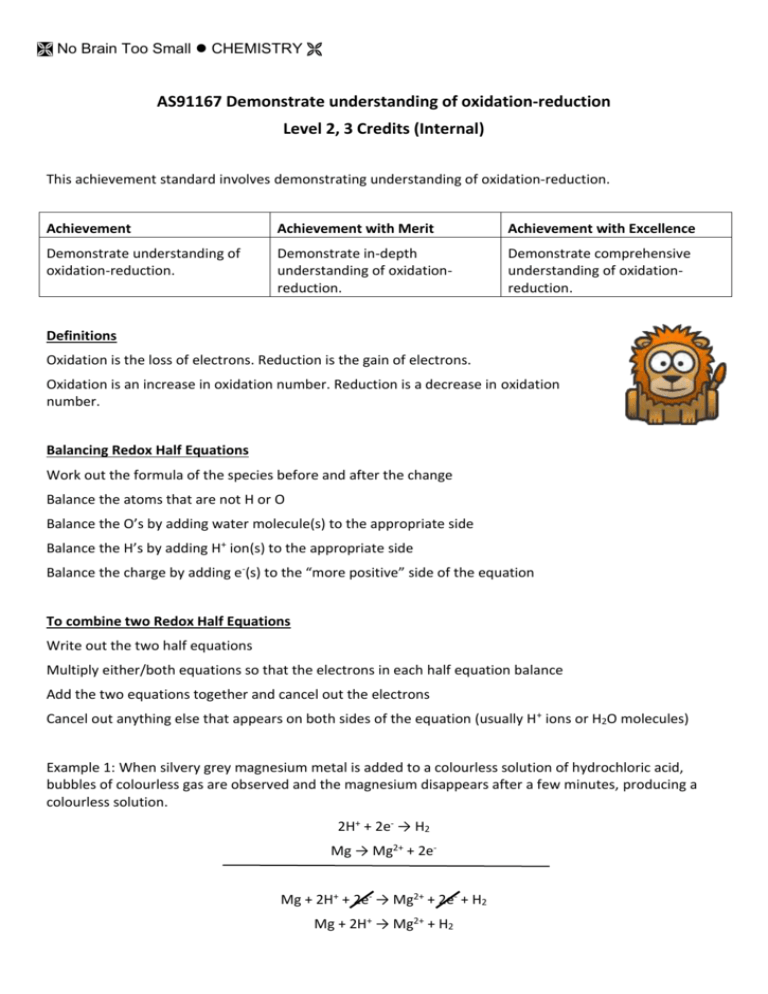
No Brain Too Small CHEMISTRY AS91167 Demonstrate understanding of oxidation-reduction Level 2, 3 Credits (Internal) This achievement standard involves demonstrating understanding of oxidation-reduction. Achievement Achievement with Merit Achievement with Excellence Demonstrate understanding of oxidation-reduction. Demonstrate in-depth understanding of oxidationreduction. Demonstrate comprehensive understanding of oxidationreduction. Definitions Oxidation is the loss of electrons. Reduction is the gain of electrons. Oxidation is an increase in oxidation number. Reduction is a decrease in oxidation number. Balancing Redox Half Equations Work out the formula of the species before and after the change Balance the atoms that are not H or O Balance the O’s by adding water molecule(s) to the appropriate side Balance the H’s by adding H+ ion(s) to the appropriate side Balance the charge by adding e-(s) to the “more positive” side of the equation To combine two Redox Half Equations Write out the two half equations Multiply either/both equations so that the electrons in each half equation balance Add the two equations together and cancel out the electrons Cancel out anything else that appears on both sides of the equation (usually H+ ions or H2O molecules) Example 1: When silvery grey magnesium metal is added to a colourless solution of hydrochloric acid, bubbles of colourless gas are observed and the magnesium disappears after a few minutes, producing a colourless solution. 2H+ + 2e- → H2 Mg → Mg2+ + 2eMg + 2H+ + 2e- → Mg2+ + 2e- + H2 Mg + 2H+ → Mg2+ + H2 No Brain Too Small CHEMISTRY Example 2: Colourless sulfur dioxide gas is bubbled into acidified, dichromate solution, Cr 2O72-. A colour change from orange to green is observed. The orange Cr2O72- ions are reduced to the green chromium (III) ions, Cr3+. Colourless sulfate ions, SO42-, are also formed in solution. Cr2O72- + 14H+ + 6e- → 2Cr3+ + 7H2O SO2 + 2H2O → SO42- + 4H+ + 2e3SO2 + 6H2O → 3 SO42- + 12H+ + 6e- (x3) Cr2O72- + 14H+ + 6e-+ 3SO2 + 6H2O → 2Cr3+ + 7H2O + 3SO42- + 12H+ + 6eCr2O72- + 2 14H+ + 3SO2 + 6H2O → 2Cr3+ + 7H2O + 3SO42- + 12H+ Cr2O72- + 2H+ + 3SO2 → 2Cr3+ + H2O + 3SO42The oxidant is the dichromate solution, Cr2O72-, and it is reduced to Cr3+. SO2 is the reducing agent. In the lab it is often more convenient to use a colourless solution of hydrogen sulfite, HSO3H2O + HSO3- → SO42- + 3H+ + 2e- Rules for assigning oxidation numbers/states The oxidation number of an element is zero, 0 In molecules the sum of the oxidation numbers adds up to zero In polyatomic ions, the sum of the oxidation numbers adds up to the charge on the ion In simple monatomic ions the oxidation number is the same as the charge on the ion H in compounds is always +1 except in metal hydrides e.g. NaH where it is -1 O in compounds is always -2 except in peroxides e.g. H2O2 where it is -1 F in compounds is always -1 RED OX
